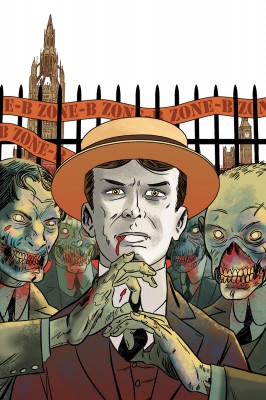Reviewer: Emera
Date read: 10.15.2012
Book from: Borrowed from cousin
“…or, The Purloined Coronation Regalia: being a revelation of matters of High Confidentiality and Greatest Importance, including extracts from the intimate diary of a Noblewoman and the sworn testimony of a Lady of Quality
Dear Reader,
We are having the most wonderful time on our tour of Europe with our new husbands, Thomas and James. We’ve been shopping in Paris, sightseeing in the Alps, and riding gondolas in Venice – there’s nothing like exploring the Continent!
However, there have been some troublesome moments. There was the midnight intruder who left behind a fashionable Turkish slipper. We also always seem to be running into the same peculiar people on our visits to ancient sites. And, oh yes, there was our discovery of the mysterious parcel that hints at a murderously magical plot of international importance!
Clearly, this isn’t quite the calm and relaxing journey we were expecting. But this Grand Tour is turning out to be the best adventure of our lives!
Love,
Cecy and Kate“
The Grand Tour is an equally witty and fun sequel to the classic Regency fantasy Sorcery and Cecelia (my review). Plotwise, it’s over-reliant on convenient coincidences to move things along – the first half of the book verges on tiresome in this respect, as the girls and their husbands meander from attraction to attraction and just keep on bumping into those “peculiar people.” Eventually, though, the protagonists do go on the offensive and start trying to think one step ahead of the evil conspirators, as the extent of their plot becomes increasingly clear. But even before then, the affectionately combative dialogue, occasional brushes with danger (thieves! highwaymen! societal embarrassment!), and opportunities for secondhand touristry (there’s plenty of amusing and curious detail on 19th-century European travel, with the bonus of magical conveniences like anti-flea charms) kept me trundling on through the pages.
One of my only disappointments with Sorcery and Cecelia was the authors’ exceedingly light touch when it comes to fantastical worldbuilding, so I was gratified that The Grand Tour, with its international stakes and post-Napoleonic anxieties about war and rulership, goes a bit further in weaving magic into the world’s political and historical fabric. Its climax, especially, hints intriguingly at the depth of ancient magical practice.
Mostly, though, The Grand Tour is happy to remain a character-driven romp. The epistolary form rarely generates any real plot tension, since dramatic events are necessarily recounted after the fact, so I found that more tension arises from any distress the characters might be feeling during the events, than from the events themselves. This is especially so since the universe is a quite moral one, and threats to life and limb of the main characters are rarely serious and never permanent. Very comforting.
I did previously also complain about it being difficult to distinguish the personalities of the main characters; it turns out the nearly 500 pages’ worth of sequel is an effective cure for that, especially when one of the major subplots is Kate’s continued efforts to overcome her nervousness at all social obligations. This is resolved in a heavy-handed but still charming way.
The last page of the book suggests, of course, the possibility of another sequel, which I’ve only just realized was released in 2006: The Mislaid Magician, or, Ten Years After, which I’ll have to keep in mind for the next time I’m looking for the bookish equivalent of a frothy cup of hot chocolate. All three books have recently been released as ebooks with beautifully designed covers (link includes an interview with Stevermer on the trilogy).
Go to:
Patricia C. Wrede: bio and works reviewed
Caroline Stevermer: bio and works reviewed
Sorcery and Cecelia, by Patricia C. Wrede & Caroline Stevermer (1988): review by Emera


